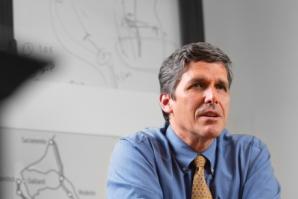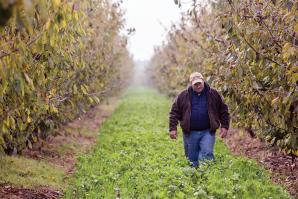High-speed trains linking Northern and Southern California have been a point of contention for more than a decade. For some, such “bullet trains” are the ideal solution to growing transportation needs; for others, they represent a boondoggle with enormous economic risk.
In 2008, California voters by a narrow margin endorsed the vision of high-speed rail when they approved borrowing $9 billion to begin planning and building the nation’s first high-speed train network.
That vote put California in the lead among the nation’s 11 federally designated high-speed rail corridors and first in line for a share of $8 billion earmarked for such projects.
But statewide support has been hard to come by. Business plans submitted by the High Speed Rail Authority in 2008 and 2009 drew widespread criticism for being unrealistic in forecasting both ridership and revenue, far too costly and too focused on the Central Valley.
To their credit, HRSA board members listened and responded to criticisms and suggestions from across the state. Their revised plan, released in April, reduces costs to $68 billion from $98 billion and speeds construction by using existing rail infrastructure. It provides better service more quickly by making simultaneous improvements to Bay Area and Los Angeles commuter trains, and it promises the first trains would run between Merced and the San Fernando Valley within a decade.
This new plan has gained important and vocal support from Gov. Jerry Brown; the mayors of Sacramento, San Francisco, San Jose and Los Angeles; and from most Central Valley political and economic leaders.
With that growing public commitment to high-speed rail came the first private sector investors, a group of Central Valley developers who say they are ready to raise and spend $1 billion developing a maintenance yard and more if the authority puts it on their property in Madera. They see high speed rail as a money-maker — for themselves and for the Valley — with their investment alone putting more than 1,000 people to work and serving as a magnet for related industries.
So, is high-speed rail about to steam ahead? Not quite. The state Legislature must approve $2.7 billion from the voter-approved bond money. Then the federal government would contribute its promised $3.3 billion and work can begin.
As is often the case, legislators continue to haggle. They have introduced several pieces of legislation related to HSRA, some claiming to move the project forward, others attempting to bring it to a complete halt.
Enough already. A project of this scope is certain to have risks and certain to attract naysayers. Think of the California State Water Project, often criticized even as voters narrowly approved it in 1960. Now we ask ourselves: Where would we be without it?
I’m confident that in 20 years we’ll be saying the same thing about high-speed rail, which would create thousands of jobs, get cars off our highways, reduce congestion and air pollution, and save the billions of dollars we would otherwise spend building and repairing highways and airport facilities needed to serve a growing state.
Hopefully, our state legislators will put aside partisan political interests and come together to endorse high-speed rail and, in so doing, make a bold and sound investment in our state’s future.
Recommended For You

The Conductor
The California High-Speed Rail Authority replaced an engineer with a political operative to lead the nation’s biggest public works project. Jeff Morales instantly charmed his opponents but made technical decisions that placed high-speed rail at the mercy of the courts. Can Morales save his runaway train?

The Price of Progress
San Joaquin farmers protest bullet train
City dwellers driving past the expansive cotton fields and scattered farmhouses along Highway 43 to Corcoran might get the feeling they’ve left California. A haze of dust, bugs and little particles of cow dung blanket the road between Fresno and Bakersfield. Even on a nice day, wiping debris from a car windshield begins to feel futile.


